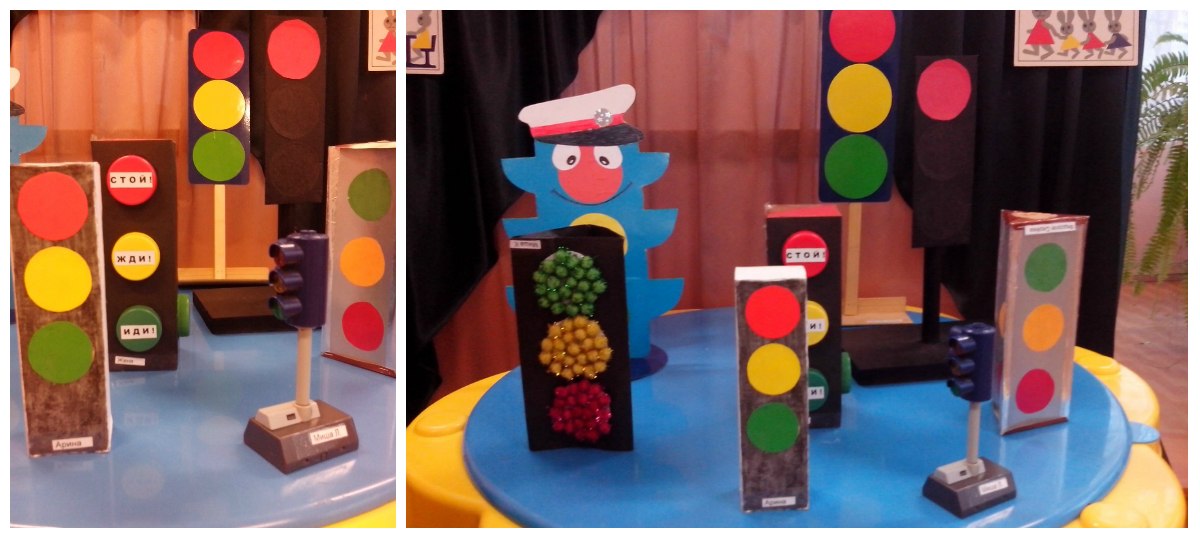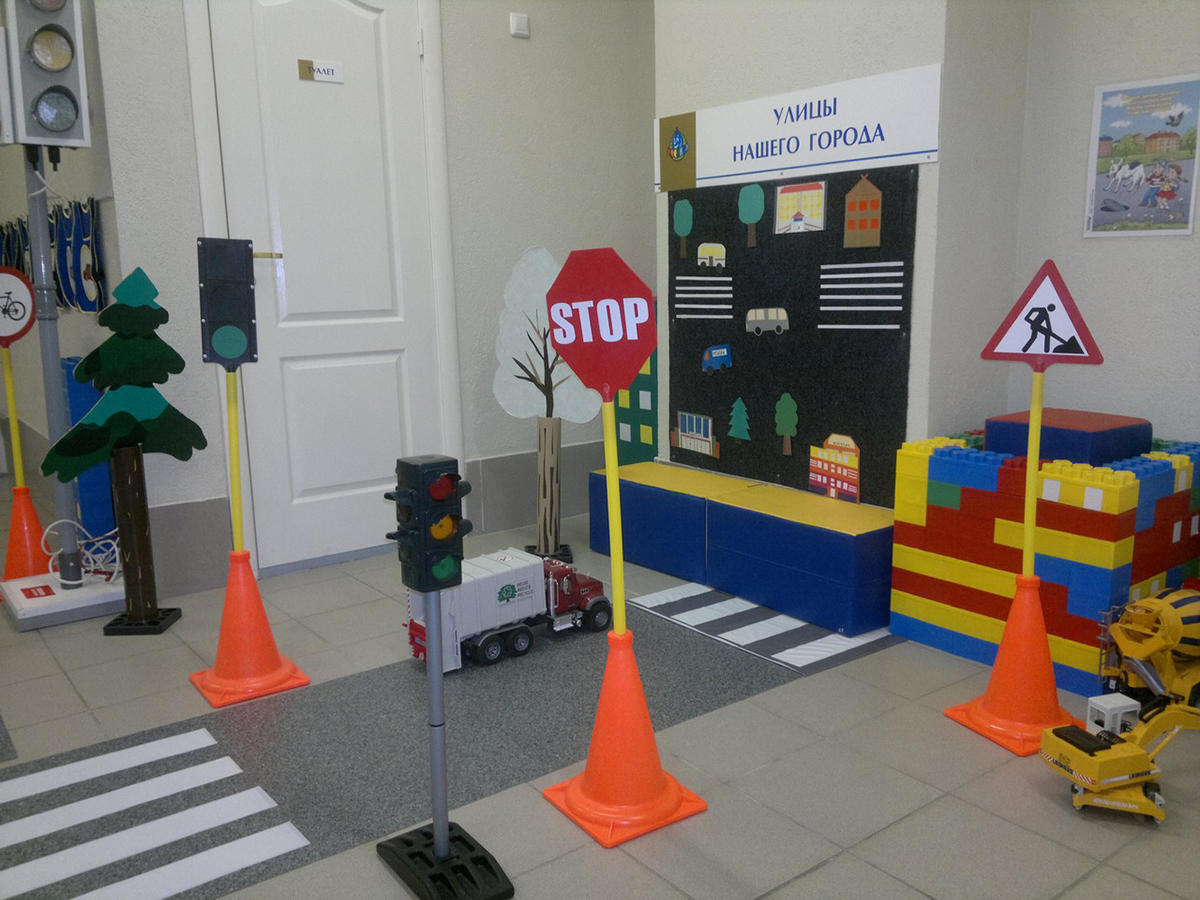
So that the child is safe on the street, it is important to know traffic rules. Start with learning in the garden.
The content of the article
Education of social adaptation and communicative development in a child - are among the most important tasks for the preschool. And it is important in this skill is to comprehend the rules of the road. A person in the conditions of the modern world faces a lot of risks, so the desire to protect yourself and their children is becoming important. The most vulnerable group of society is children of preschool and younger school age.
Children do not know how to predict the outcome of the situation, this skill appears with experience, but relying on adult knowledge baggage they can avoid negative consequences. To do this, it is necessary to teach the child to the rules of behavior on the roadway not only orally, but also with the help of practical and didactic classes. Training should begin with early preschool age a child - to move from elementary tasks to more complex solutions.
Methods of learning PDD younger group
Educators and parents must take care of the timely informing the child about hazardous hazards. Traine to navigate and find a way out of difficult life situations. Studying the rules of pedestrian behavior on the road, has its undeniable relevance. Because of the ignorance of the basic rules of behavior on the roadway, children are more often found by victims of road accidents.
Sometimes adults ignore the process of teaching the child to road rules, considering this useless spending time - as a result, the child is not able to assess the situation on the road, guess the distance between it and a moving car, evaluate the dimensions of transport and movement speed. The child does not take into account the risk factor and is trying to overcome the road, overestimated its potential.
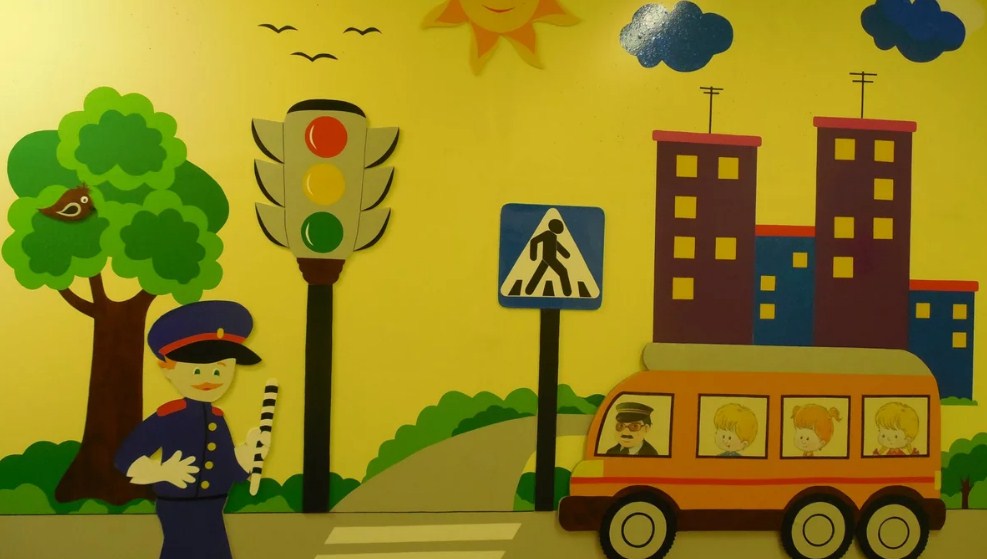
PDD
- Start familiarization with the rules of behavior on the roadway in the nursery group with children from 2 to 3 years. Conducted as group, also individual classes.
- Children introduce common concepts - what is a car, road, pedestrian, traffic light, pedestrian crossing. Based on the knowledge of the colors of the rainbow already acquired, explains the main colors of the lights of the traffic lights. Lessons take place using visual material: toys, objects, vehicles and traffic light layouts, educational games and benefits, road attributes and costumes.
- More in-depth classes, including the consolidation of theoretical material in practice, are carried out in a specially equipped room or on the site with the marking of road transitions and intersection with set signs. This allows the educator to develop in a child logical thinking by quickly evaluating the situation. The educator gradually develops in children a guideline skills on the carriageway, forms disciplined behavior on the road, teaches the diploma of pedestrians.
- The educator must take into account the individual features of the perception of information by each child - involve in training through the use of all kinds of classes. Studying pictures, books, illustrations depicting urban streets, solving mysteries and rushes, cognitive and plot games, competitions, drawing road situations.
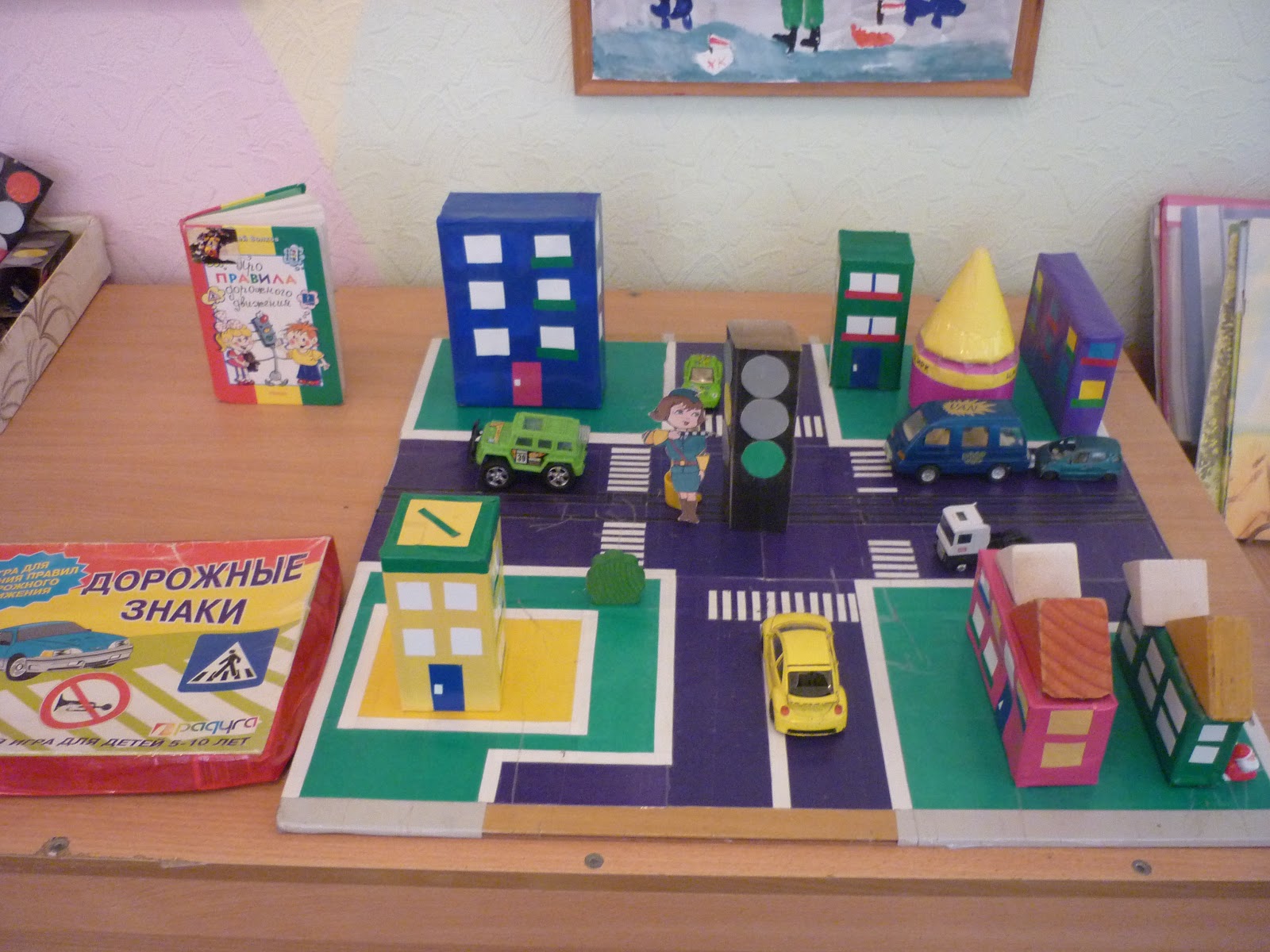
Learn with children
Several main tasks of studying traffic rules in the first youngest group should be highlighted:
- Younger preschoolers must learn to distinguish the passenger transportation from the truck, know what is a bus.
- Master the initial idea of \u200b\u200bthe traffic light is the principle of its interaction with transport and pedestrians. Learn to define traffic lights - red, yellow, green.
- Assimate what is the warning signal of the car. Learn the rules for the correct response to the heard signal.
- Have an initial idea of \u200b\u200bwhat street is and road. A separate time is paid to the topic of sidewalks and the carriageway - what is the difference and for which a pedestrian crossing is needed.
- Children must have a consideration - who is such a driver, pedestrian and passenger. Understand their functional importance and difference.
- It is important to avoid the educator inaccuracies in the definitions of the concepts of traffic rules: not to generalize the meaning of words: "Parking" and "Stop", "Pedestrian Transition" and "Pedestrian Track".
To master the tasks and familiarize children with training materials - practical classes are held in the game room.
Teaching in the younger pre-school group The foundations of traffic rules occurs according to such a methodical plan:
- At the lesson, the educator uses visibility: A variety of toy cars, imitation of the steering wheel, cardboard rims on the head or card with the image of cars and road signs, layout of the traffic light. It makes more understandable and interesting classes. The child masters visual objects on the roads, learns to recognize them in the environment. The educator explains in detail what the car looks like - she has four wheels, steering wheel, body and cabin. Compare transport of different quantities among themselves, it shows where the driver's seat, and where passengers. It is also necessary to clearly show what a pedestrian crossing, from which it consists and where it is located on the road markup.
- The teacher causes the interest of children with the help of a didactic game - gives them a task using puzzles or cubes with the image of machines. For example, place the machines into the garages - for this it is necessary to compare the size of the picture or cube with the hole. Also uses the game with arrangement of machines and pedestrians: dividing children into groups, appoints one to perform the role of pedestrians, and the other is the role of transport. Children must correctly define their location on the road, according to the role.

For babies
- Children study traffic lights. The educator uses visual materials: first on the table there are three mugs red, yellow and green in random order. Then children should, determine and call where what color. After the colors are defined, the teacher distributes the picture of the traffic light circuit and colored mugs, introduces the position of each color on the traffic light figure, lays the mugs in the right order. Requests children to repeat these manipulations. Next, the teacher explains that a certain action corresponds to each color: red - stand, yellow - look around, green - go.
- To secure the studied, the educator offers children to play the game, Where children help the doll go across the road. A line draws, a conditionally denoting line between the sidewalk and expensive, the doll does not go beyond the line, the educator shows one of the circles - children should call color and indicate that you need to make a doll. If the color and action is not quite correct - the educator shows the disappearance of the doll and asks to once again carefully determine. Also, the teacher offers every child to translate through the doll on his own way, summing up how important it is to hold onto the hand of someone who knows the rules of the road.
- The educator uses all words in conversation as they are - without diminutive suffixes. Also cannot be used in learning illustrations in the form of comics. The child must realize that traffic is not a toy, but a serious situation. The educator should convey to the child's consciousness the importance of responsibility for behavior on the roadway. Explain what consequences may arise when violating the rules. To point out the child to be able to warn friends, when trying to make a unlawed act.

In the garden
- The teacher monitors the emotional state of children while learning traffic rules. The main actions are aimed at maintaining a sense of diligence in the child to be permissible - without developing a sense of panic fear or phobia.
Principles of Training PDD Children of the Central Group
The goal of learning rules of traffic rules in the middle preschool group consists of repetition of previously studied rules and the development of more complex tasks. At this stage, children introduce such concepts as the vehicle speed, road review, turns, or rear machine.
- The educator creates an improvised road situation. The task of the child to analyze it and make the right actions. For this purpose, active games are used with toy machines, where the child is offered to comment on their actions, for example, the car rides on the road, then speeds up the movement, it slows down, gives reverse or turns.
- The child speaks all the steps, the teacher adjusts and gradually complicates the task. Classes in the medium group must have a more conversational character - the educator leads conversations with children, involving them in reasoning about the benefits of road rules and what could happen if people did not fulfill them. Children gives a task to compose a short story about traffic lights, machines and a pedestrian crossing or bus and passengers.
- The teacher learns small poems or songs with children, makes the riddles on this topic, collectively solves the crosswords. Also in learning applies role-playing games - children are offered to feel like a driver or passenger. The teacher sends the actions of the child, commenting on and prompting the course of events, while saying the necessary phrases.
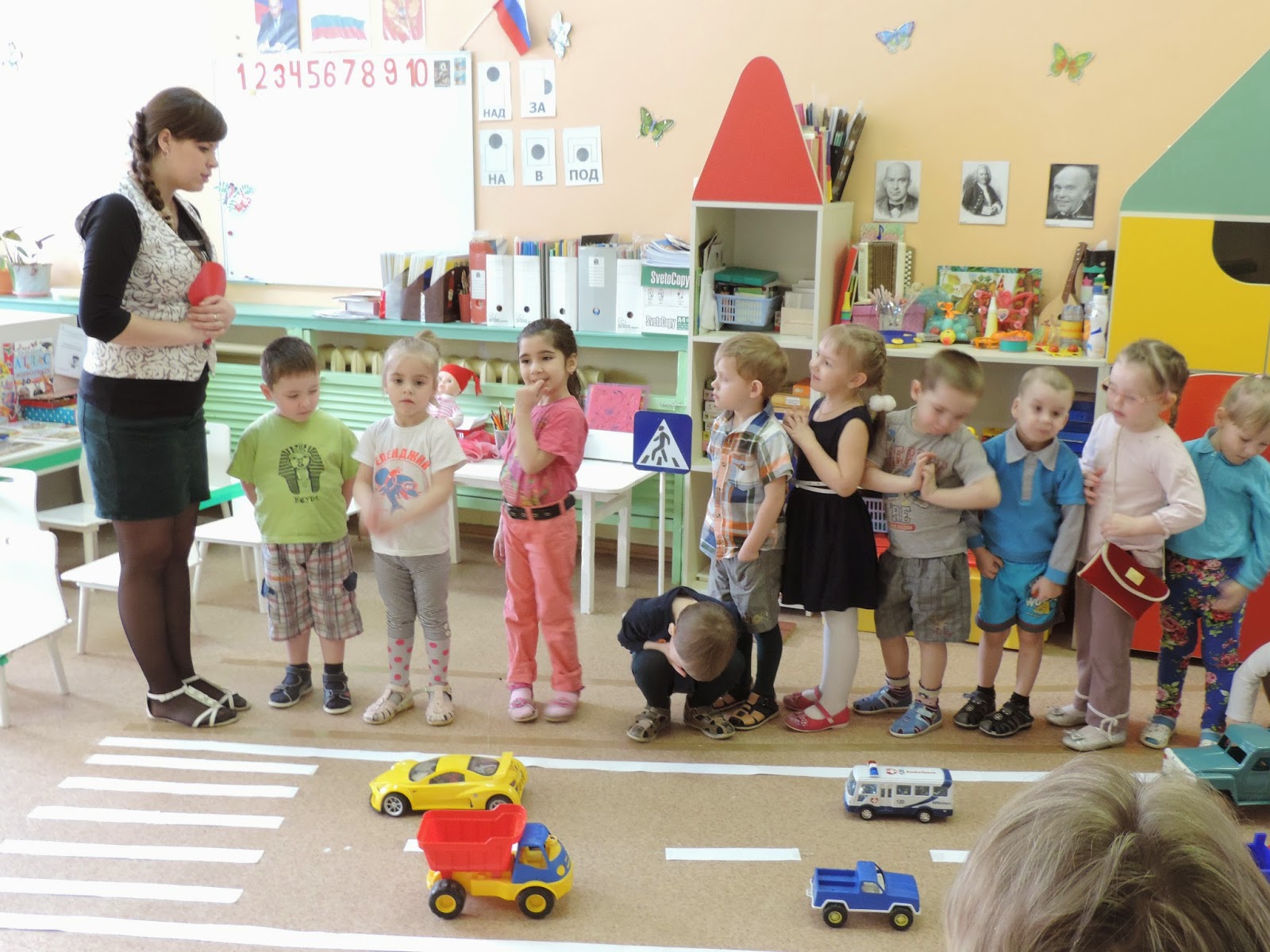
With kids
In the process of training sessions, the educator should allocate highlights:
- Very dangerous to play close to the roadway - The car moves faster than a person, so you can not run the road before walking cars. The teacher explains that there are bicycle paths for cycling, ride in winter on sleds should be as far as possible from the road, the same applies to roller skating, skates. For these purposes, special parks or platforms are equipped.
- It should be careful to bypass large transport overlapping views of the roadway. You can not run on the road, without making sure that the driving part is free. Before moving the road, you need to look around.
- Make the road transport is needed in strictly allotted for this place. - At the pedestrian crossing. You can start moving across the road only after the machines stop, passing pedestrians. At the signal of the car do not need to be rolled around. It is necessary to stop moving, the machine is much easier to drive around the property.
- At stops for public transport should not be too close to the roadway, waiting for the bus. You should approach transport when he finished the movement and opened the door to the entrance.
- It is also important to learn the topic of the passenger rules - the basic requirements of precautions when leaving and entering public transport. The output can be performed only with its full stop, viewed around. It is also necessary to affect the topic of behavior inside the moving transport - it is impossible to run through the bus cabin while driving, distract the driver. The educator must tell children about safety measures in case of an emergency.
- Go along the road follows the sidewalk on the right sideIn order not to interfere with counterfeit. If the locality is outside the city, then it is necessary to follow the side of the road to move.
- Pay attention to traffic lights - Move the road only on the green light.
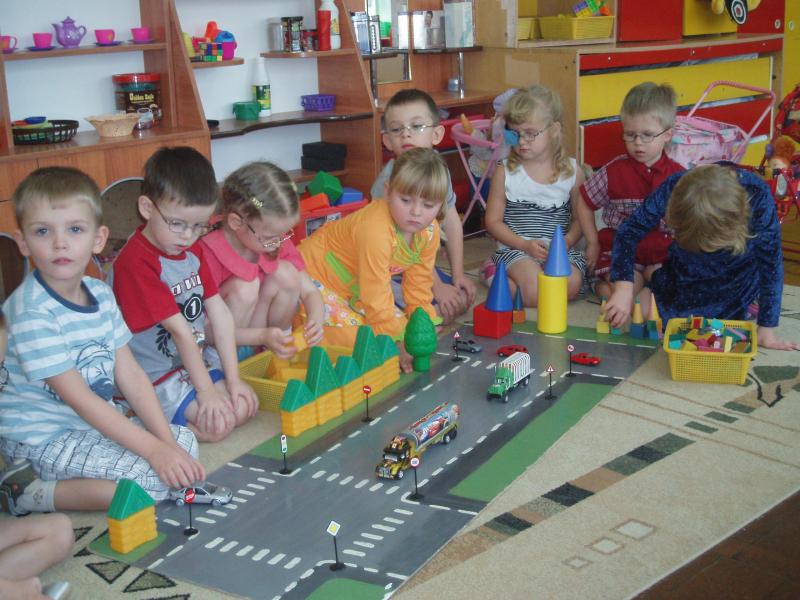
For kindergarten
It is necessary to attract parents to the process of learning children traffic rules - the educator issues a task on a house in which parents can take direct participation. For example, make a handicraft or appliqué, draw a drawing on the topic of traffic rules, to learn a small verse or a song on a given topic. Pre-teacher holds a consulting conversation with his parents - tells how to properly carry out joint classes, how the dialogue between the adult and the child should be built, which one to ask questions and what to pay attention to.
The home form of classes allows preschoolers to further strengthen the material studied. Repeat can be engaged and during a walk through the city - the child sees the road and all kinds of transport in real life, learns to interact with them, comments on the current situation, makes conclusions from it, makes decisions. The parent is important, to direct the conclusions of the child to the right results and actions, based on the general principles of the rules of pedestrian behavior on the roadway.
Child learning the basics of traffic rules in the older preschool group
In the senior group of preschoolers, introduce the main values \u200b\u200bof road signs, such as "Stop", "Caution Children", "Pedestrian Transition". Also master the concepts "Medical Item", "Power point", "Stop", "Underground Transition". At this age, the child is already able to assimilate what is unilateral and bilateral movement. Familiar with many types of vehicles.
The educator teaches children by the rules of cultural behavior in public transport and a crowded place. For practice, walks or excursions are used in public areas, collective travel in passenger transport. At this time, the teacher spends a conversation with children, introduces them to the profession of the regulator, as well as the work of the traffic police officers. All this allows children to see in reality the action of the rules, the advantage of compliance and it is better to understand their function.
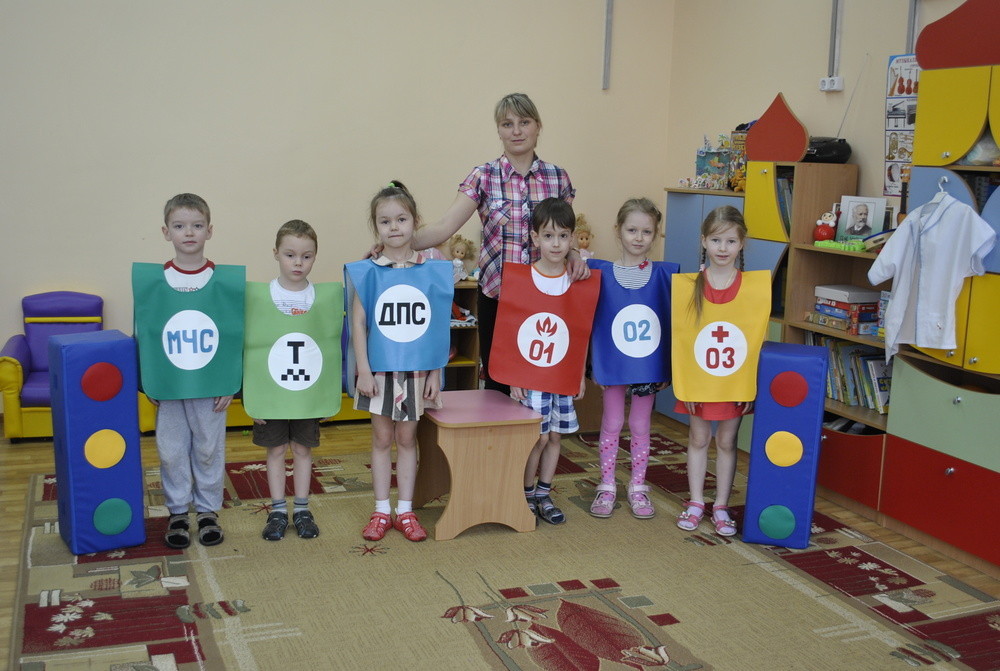
Elder
The main tasks are:
- Teach children to be attentive and responsible for their behavior in public transport and on the roadway.
- Assate those who are not familiar with the rules of road behavior, showing on their example how to behave on the road. To form responsiveness, interest and focus.
- Addition to the new skills previously obtained. Strengthen the knowledge of children about air and land transport.
- We have a sense of orientation in space in space, visual memory, the ability to maintain an excerpt, the ability to calculate your actions to bring up observation.
To engage in the process of studying the guys, it is necessary to carry out all kinds of contests and relay on the mixture. The teacher suits team competitions, for example, offers to respond to the questions about the questions about traffic rules. It can also be active games on specialized to explore traffic platforms, where children need to pass a road labyrinth, overcome the relay, taking into account all the way signs.
- Theoretical classes use thematic books, the showing of training cartoons, slides, teeing illustrations. Declarations are also held, joint children's and parental meetings in preschool institutions - open lessons.
- Children arrange a producer performance for parents - demonstrate the results learned in the skills of the skills on the rules of the road. For this, the educator simulates the situation, prescribes the scenario with the distribution of roles - children perform the role of the driver, pedestrian, traffic light, controller, vehicles and traffic violator.
- The moral of the performance should be in the instructive history, where leadership occupies an obedient pedestrian. An important role is played by substantive developing attributes. In the classroom for conducting traffic rules, it is necessary to build a corner with desktop, didactic and educational games. Must be attributes for mobile and role-playing games - steering wheel, rod, whistle and cap. Designers and layouts of road signs and roadways, machines for performing various functions - to create scene games.
- And also other auxiliary materials - books, coloring, stencils, figures of man, illustrations and posters. All that allows the child to think, recreate and develop ideas about the rules of road traffic through the game. We will not be able to create a "corner of security" for parents. The educator should fill such a corner of methodical information for adults about traffic rules and examples of teaching artistic children's literature. This method will work out with the parents missing knowledge about the rules of the road, and will tell you how to develop your child in this direction.
- Parents occupy a very important place in the formation of concepts about traffic rules, their help is extremely necessary. Adults must realize that the child always copies their master behavior in everything, including on the carriageway. It is necessary to control their behavior, avoid rapid acts - demonstrating the correct position on its example. If the parent leads vehicles - not exceed the speed in the presence of a child, not to demonstrate disregard for pedestrians, follow road signs.
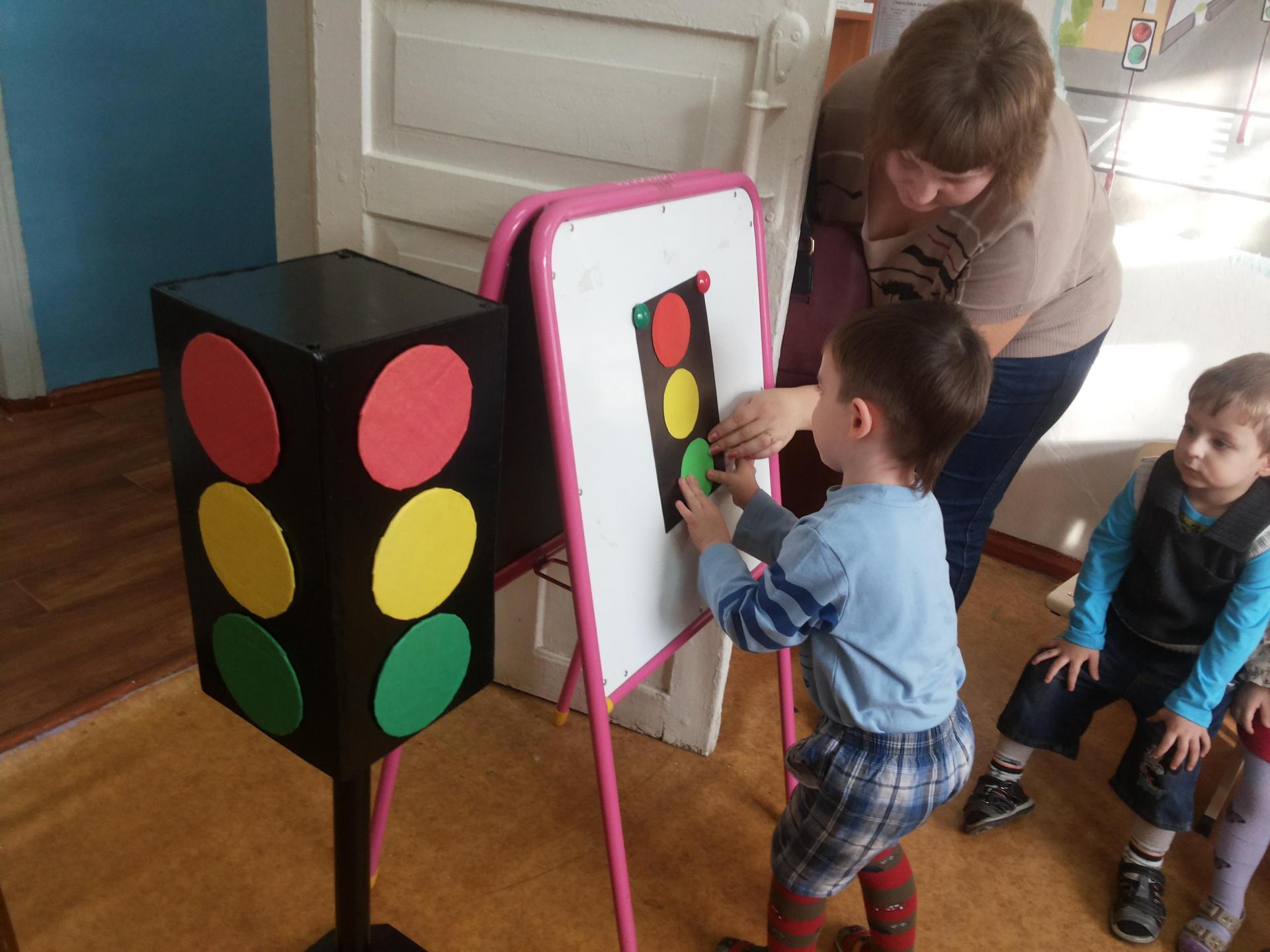
Doctrine
Performance of traffic rules will form a serious attitude towards learning and tasks. Parents need to understand that the methods of teaching traffic rules in preschool institutions and in the daily life of the child should not have discrepancies and contradictions. Here it is necessary to comply with solidarity in training. This concerns the entire environment of the child. It is necessary to control the information flow and timely hold an explanatory conversation with the child.

